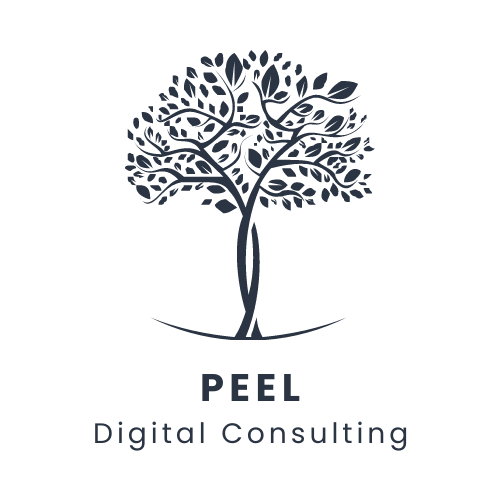SEO (Search Engine Optimization) and web design are closely interconnected, as the effectiveness of a website in ranking on search engines is influenced by its design elements. A well-optimized web design enhances user experience, site speed, mobile responsiveness, and navigational structure, all of which are critical factors that search engines consider when determining rankings. Moreover, incorporating SEO best practices into the web design process, such as proper HTML structure, keyword integration, and optimizing images, can improve a site’s visibility and attract more organic traffic. Ultimately, effective web design not only aims to be visually appealing, but also serves to enhance SEO performance.
In today’s digital landscape, where first impressions can make or break a brand, the synergy between SEO best practices and effective web design has never been more crucial. As search engines evolve and user expectations soar, creating a visually appealing website that also ranks well in search results is paramount for success. This article explores the essential strategies for integrating SEO fundamentals with thoughtful design elements, ensuring not only that your website attracts visitors but also provides an engaging and seamless user experience that keeps them coming back.
The Synergy of SEO and Web Design
1. Optimizing User Experience for Better SEO Results
When optimizing user experience (UX) for search engines, it’s essential to focus on seamless navigation, fast loading times, and mobile responsiveness. Seamless navigation ensures users can easily find relevant content, reducing bounce rates and increasing engagement. Fast loading times are critical, as slow websites frustrate users and negatively impact search rankings; optimizing images and leveraging caching techniques can significantly enhance speed.
Lastly, mobile responsiveness is crucial, given the prevalence of mobile browsing; a site that adapts well to various screen sizes not only improves accessibility but also aligns with search engine algorithms favoring mobile-friendly designs. Collectively, these areas enhance both user satisfaction and search engine visibility.
2. Structuring Your Website for SEO Success
A well-organized site structure plays a crucial role in enhancing both user experience and search engine crawling/indexing. By employing a logical hierarchy with clear categories and subcategories, websites facilitate easy navigation for users, allowing them to find information quickly and efficiently. This intuitive layout not only keeps visitors engaged, but also encourages longer dwell times and reduced bounce rates.
For search engines, a structured site with a clear URL hierarchy, proper internal linking, and sitemaps aids in crawling and indexing, allowing algorithms to easily discover and understand the content. This enhances the site’s visibility in search results, ultimately driving more organic traffic while ensuring users find the information they seek with minimal effort.
Descriptive URLs are another essential element; they should be simple, relevant, and include keywords to enhance understanding both for visitors and search engines. Lastly, strategic internal linking helps distribute page authority across the site and guides users toward related content, improving user experience and increasing the likelihood of higher search rankings. Together, these elements create a cohesive, intuitive site structure that supports SEO efforts.
3. Leveraging Visual Design Elements for Engagement and Trustworthiness
Visual aspects like color schemes and typography play a crucial role in shaping user engagement and perceived trustworthiness of a website. Color schemes can evoke emotions and influence user behavior; for example, warm colors may create excitement while cooler tones often project calmness and reliability. Consistency in color can enhance brand recognition, making users more likely to return. Similarly, typography impacts readability and overall aesthetic; a clear, professional font can enhance perceived reliability, whereas overly decorative fonts may deter users. Together, an effective color palette and well-chosen typography create an inviting and credible environment that fosters user interaction and builds trust, ultimately influencing users’ decisions to engage further with the site.
Also, a well-structured layout is essential for enhancing the user experience, as it allows users to navigate content intuitively and efficiently. By organizing information logically, important elements stand out, ensuring that users can easily locate critical details, which in turn fosters trust and reliability in the brand. An aesthetically pleasing and coherent design not only captures attention but also conveys professionalism, reinforcing the brand’s credibility and encouraging user engagement and loyalty. Ultimately, a thoughtful layout transforms a passive viewing experience into an active and satisfying interaction, solidifying the brand’s presence in the minds of users.
4. Incorporating Accessibility Features into Your Web Design Strategy
Making websites accessible to all users, including those with disabilities, is crucial for fostering an inclusive digital environment that empowers everyone to participate fully in online activities. Accessibility ensures that individuals with visual, auditory, mobility, or cognitive impairments can navigate, interpret, and interact with web content effectively, promoting equality and removing barriers to information and services. Beyond ethical considerations, accessible design enhances user experience, supports legal compliance, and broaden audience reach, ultimately benefiting businesses. By prioritizing accessibility, we contribute to a society where everyone can engage with the digital world on equal footing, thereby enriching community interaction and driving innovation.
To effectively implement key accessibility features like alt text for images, start by ensuring that all visual content serves a purpose and is relevant to the surrounding text. Keep alt text concise, typically under 125 characters, while clearly describing the image’s content and context to assist visually impaired users using screen readers. Avoid redundant phrases like “image of” or “picture of,” as these can be inferred. Use specific language that conveys the image’s function, especially for buttons or links. Regularly review and update alt text as content changes, and consider involving users with disabilities in testing to ensure effectiveness. Training staff on accessibility standards and guidelines can also enhance overall site inclusivity.
5. Tools and Techniques for Assessing the SEO Performance of Your Website Design
Evaluating the SEO performance of your website’s design elements is crucial for optimizing user experience and search engine rankings. Popular tools include Google Search Console, which provides insights into how Google crawls and indexes your site, helping identify design-related issues. SEO tools like Google Analytics and SEMrush can identify keywords that are underperforming, track organic traffic sources, and assess backlink quality, revealing opportunities for enhanced visibility; offering comprehensive audits that analyze on-page SEO factors; Ahrefs, known for its detailed backlink analysis and site audit features; Moz Pro, which helps track keyword performance and site health; and Lighthouse, a Chrome extension that evaluates website performance, accessibility, and SEO best practices.
Additionally, tools like GTmetrix measure page speed and overall performance, while Screaming Frog aids in identifying technical SEO issues related to navigation and structure, ensuring your design elements support your SEO strategy effectively.
Meanwhile, UX tools such as Hotjar and User. Testing provide insights into user interactions, pinpointing where users drop off or struggle, thus highlighting areas needing better navigation, content clarity, or mobile optimization. By leveraging the data from these tools, businesses can refine their strategies to boost both their search rankings and the overall user journey, ultimately leading to higher engagement and conversion rates.
Conclusion: Building Effective Websites Through the Integration of SEO and Web Design Principles
In conclusion, the integration of SEO and web design principles is essential for creating effective websites that not only attract visitors but also convert them into loyal customers. By prioritizing user experience and optimizing for search engines, businesses can significantly enhance their online presence and achieve their marketing goals.
At Peel Digital Consulting, we specialize in marrying these two critical facets of digital strategy, ensuring your website stands out in a competitive landscape.
Let us help you build your website that is not only visually appealing but also optimized for success but also optimized for success. Schedule a consultation today!


